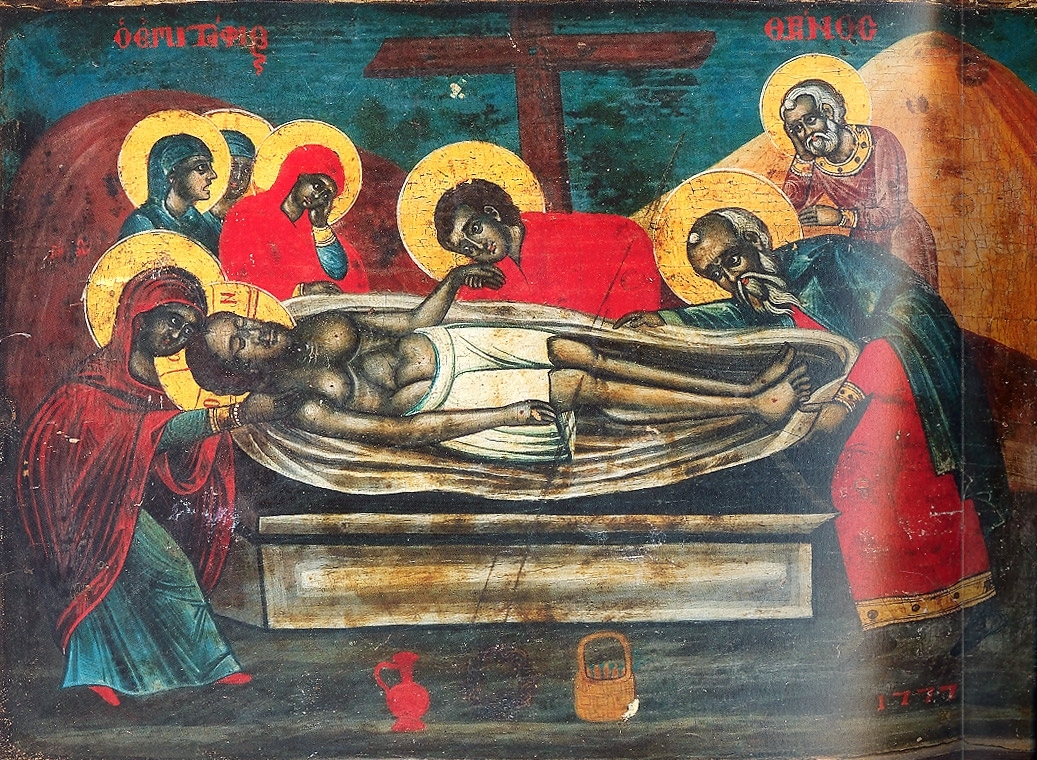
- The Lamentation (Epitaphios Threnos)
- Item ID : 332
- Collection Name : Holy Metropolis of Limnos and Ag. Eustratios
- Type : Icon
- Year : Late 17th century
- Dimension : 32Χ44Χ3
- Current Place : Saint John – Pedinos
- Description : The theme depicts Christ after he has been removed from the cross, lying supine, as his body is being prepared for burial. In the particular icon with the inscription: ‘Ο ΕΠΙΤΑΦΙΟΣ (THE EPITAPH) / ΘΡΗΝΟΣ (LAMENT)’, the scene unfolds against a barren landscape with a dark green background and two desolated mountains schematically rendered in each side of the panel.
The crucifixion cross is centered on a vertical axis subdividing the icon into two equal parts. The dead body of Christ is depicted being in a horizontal position in harmonized dark colors with alternating shades of grayish highlights. His facial characteristics exude esoteric serenity and benevolent pictorial expression. An ocher-color loincloth surrounds his waist. His body is placed in a linen sindonion, whose right corner is held by St. Joseph being ready to enwrap his body. On the other edge Virgin Mary, in a slanted posture she is touching tenderly Christ’s shoulder while her head l is reposed on his forehead.
Right into the center of the icon, Saint John bends his body and hold Christ left hand in order to solemnly kiss it.
On the upper left side of the icon a group of faithful women are depicted in deep grief and right across them on the right side, St.Nikodimos is depicted in great sorrow.
Christ dead body is depicted ready to be placed in a reliquary. The ground at the bottom side of the icon is painted in nuances of dark olive-greenish color, and the chrismatory jar is simplistic outlined in a red color. Next to the jar, the basket that contains the crucifixion nails and the spine garland.
The key scene of the Epitaphios Lament was established in the 11th century, during the Paleologan age, and was widely spread during the Ottoman occupancy.
The vivid colors used in order to contrast the thematic disposition, can be ascribed as the iconographer technique, so as to follow the Athonites provincial workshops of the eighteenth century.


